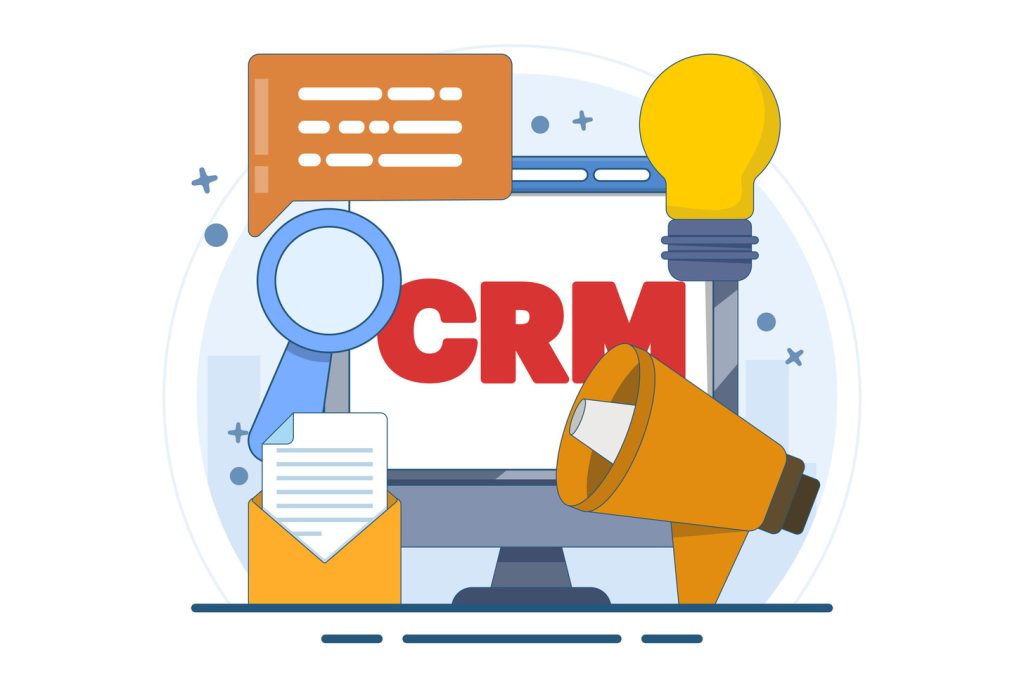Invoice Templates: Streamline Your Billing Process

Cash transactions no longer dominate commerce. Customers demand choices – physical checks, digital wallets, or instant card payments. Companies that adapt to these preferences accelerate cash flow while building client trust through professional transaction processes.
Specialized tools now merge classic and digital payment methods seamlessly. For example, platforms like PayPal and Stripe integrate directly into billing systems. This lets clients settle balances instantly through their preferred channel, reducing delays.
Well-structured billing documents form the backbone of efficient operations. They automatically include critical details like tax IDs, due dates, and service descriptions. Customizable layouts also maintain brand consistency without manual formatting.
Cloud accessibility transforms how teams manage financial records. Sales reps can generate polished statements during client meetings. Accountants review real-time data from remote locations. This mobility eliminates version control errors common with desktop-only systems.
Automation handles repetitive tasks like payment reminders or recurring charges. Owners regain hours previously spent on administrative work. These efficiencies allow sharper focus on growth strategies and customer relationships.
Key Takeaways
- Flexible payment options meet diverse customer expectations
- Professional billing documents reduce errors and delays
- Cloud systems enable access from any device or location
- Automated integrations speed up transaction processing
- Standardized formats ensure legal and brand compliance
- Time-saving features redirect focus to core operations

Overview of Invoice Templates in Modern Business
Modern billing practices demand tools that adapt as quickly as client expectations. Digital systems now replace manual spreadsheets, offering multi-format compatibility across Word, Excel, PDF, and cloud platforms like Google Workspace. This flexibility ensures teams maintain professional standards while meeting diverse workflow needs.
| Feature | Traditional Methods | Modern Solutions |
|---|---|---|
| File Formats | Limited to desktop apps | Cross-platform accessibility |
| Calculations | Manual entry | Auto-tax computations |
| Collaboration | Email attachments | Real-time cloud edits |
| Software Integration | Standalone files | Payment processor links |
Platforms like Wave demonstrate how automated systems handle recurring charges and compliance details. These tools eliminate calculation errors while tracking payments through multiple channels. Businesses using scalable pricing plans often report faster transaction cycles.
Custom branding options in digital formats reinforce company identity during client interactions. Accountants approve updates instantly from any device, ensuring accuracy across departments. This operational harmony reduces administrative delays by 43% according to recent fintech studies.
Integration with accounting software turns static documents into interactive records. Automatic payment reminders and balance tracking keep cash flow predictable. Such features explain why 68% of service providers now prioritize digital billing systems over manual alternatives.
Benefits of Using Invoice Templates for Efficiency
Businesses lose 15 hours monthly recreating billing documents from blank pages. Pre-built layouts eliminate this drain by providing ready-to-use frameworks. Brandon Curkan of The Content Eng confirms: “Wave replaced four tools I used for payment tracking, saving 20+ hours monthly through automated systems.”
| Factor | Manual Process | Template Advantage |
|---|---|---|
| Setup Time | 45-60 minutes | Under 3 minutes |
| Error Rate | 12% average | Below 2% |
| Scalability | Linear effort growth | Fixed workload |
| Integration | Separate systems | Unified workflows |
Automated tax calculations prevent costly compliance mistakes. Systems cross-check rates against project locations, reducing audit risks. This precision speeds up approvals – 78% of clients pay faster when documents show clear breakdowns.
Cloud-based formats let teams update legal details across all active files simultaneously. Sales reps access latest versions during field negotiations. Accountants monitor real-time edits through permission controls.
These tools grow with companies through customizable fields and multi-currency support. Payment links embedded in digital formats shorten transaction cycles by 40%. Businesses using standardized layouts report 31% fewer client disputes over charges.
Customizable Free Invoice Templates
Modern businesses require adaptable tools that align with diverse operational needs. Customizable billing frameworks eliminate upfront costs while delivering professional-grade results comparable to paid alternatives.
Multiple Formats: PDF, Word, Excel
Documents in PDF format maintain integrity across devices, preventing unauthorized edits and ensuring clients receive accurate records. This universal compatibility reduces payment delays caused by file accessibility issues.
Microsoft’s word processor remains popular among freelancers for its intuitive design. Pre-built layouts in this format allow quick customization without specialized training, maintaining brand consistency.
Spreadsheet-based solutions automate complex calculations, from tax rates to project totals. Built-in formulas reduce errors by handling math automatically, freeing teams to focus on strategic tasks.
Cloud-Based Accessibility and Sharing
Google Drive integration allows 24/7 access to financial records from any internet-connected device. Sales teams update project details during client meetings while accountants monitor changes in real time.
Cloud storage safeguards against local hardware failures, ensuring business continuity. Permission controls let managers approve edits before finalizing documents, maintaining compliance across departments.
These systems support collaborative workflows without email attachments or version confusion. A recent study showed companies using cloud-based templates reduce administrative errors by 37% compared to desktop-only alternatives.
How Invoice Templates Enhance Your Billing Process
Efficient billing systems separate thriving businesses from those drowning in administrative tasks. Automated payment features enable companies to charge authorized cards monthly after initial transactions. This eliminates manual follow-ups while maintaining predictable cash flow.
Standardized documents ensure every client interaction includes critical details like due dates and bank information. One financial manager notes: “Recurring systems saved 60 hours last year by automating repeat charges.” Cloud-based platforms sync updates across teams instantly.
Embedded payment links accelerate transactions by letting customers settle balances immediately. Professional layouts build trust – 68% of businesses report faster payments when using polished formats. Custom fields add project specifics without compromising brand consistency.
Automated reminders gently nudge clients as deadlines approach, reducing late payments by 41% according to recent data. These tools transform billing from a time sink into a strategic asset.
Getting Paid Faster with Professional Invoices
Speed and professionalism define modern payment expectations. Clients prioritize transactions that respect their time while ensuring security. Polished billing documents accelerate this process by presenting clear terms and trusted payment pathways.
“Secure credit card links in our system cut payment delays by half,” says Estelle Tracy of 37 Chocolates. “Clients complete transactions before leaving meetings.”
Automated Payment Links for Quick Transactions
Embedded payment buttons transform static documents into actionable tools. Customers click to pay instantly through platforms like Stripe or PayPal. This direct approach reduces follow-up emails and manual reconciliation.
Credit processing integrations address security concerns head-on. Giancarlo Pawelec of PAWELEC Photo notes clients prefer portals with encryption over emailing card details. Real-time notifications alert businesses the moment balances clear.
Multiple payment options remove friction – 62% of customers abandon transactions if their preferred method isn’t available. Digital systems support cards, ACH transfers, and mobile wallets simultaneously. This flexibility helps businesses get paid faster while maintaining professional standards.
Automation extends to reminders and receipts, creating seamless cycles. Systems flag overdue accounts while sending thank-you notes for prompt payments. These touches build loyalty while ensuring consistent cash flow.

Essential Elements of a Professional Invoice
Clear documentation forms the backbone of trustworthy financial exchanges. Every transaction requires precise records that satisfy legal standards while fostering client confidence. Structured layouts eliminate ambiguity, ensuring both parties understand obligations and timelines.
Mandatory Details and Legal Requirements
Legal compliance starts with foundational elements. Business names, addresses, and tax IDs must appear prominently. Unique numbering systems prevent duplicate charges and simplify audit trails.
| Element | Purpose |
|---|---|
| Issue/due dates | Sets payment expectations |
| Line item breakdown | Shows work completed |
| Tax calculations | Meets reporting rules |
Transparent cost breakdowns reduce disputes. A recent accounting survey found 81% of delayed payments stem from unclear service descriptions. Quantities, rates, and totals should align with initial agreements.
Addition of Custom Fields for Clarity
Tailored sections address industry-specific needs. Construction firms add permit numbers. Marketing agencies include campaign codes. These fields turn generic forms into project-specific tools.
“Customized layouts cut payment processing time by 33%,” notes a FinTech Efficiency Report. “Clients approve charges faster when documents mirror their internal systems.”
Optional notes sections clarify terms like late fees or discounts. Digital formats allow real-time updates across departments, ensuring consistency during audits or client reviews.
Tips for Setting Up Recurring Invoicing
Predictable revenue streams start with systems that handle repeat transactions effortlessly. Companies like CONTINUE demonstrate how automation transforms billing from monthly chore to strategic advantage. Will Perkins, their operations lead, shares: “Clients appreciate consistency – we dispatch payment links automatically, eliminating back-and-forth emails.”
Smart Scheduling for Reliable Payments
Modern platforms let businesses schedule document delivery weeks in advance. Payment portals activate precisely when clients need them, maintaining cash flow rhythm. This approach reduces late payments by 29% compared to manual methods.
- Calendar-based triggers ensure billing aligns with project milestones
- Custom intervals accommodate weekly retainers or annual contracts
- Multi-channel delivery via email/SMS matches client preferences
Automated reminders work silently behind the scenes. Systems send polite notifications three days before due dates, then escalate if payments stall. This tiered approach preserves relationships while enforcing timelines.
“Our overdue balances dropped 55% after implementing reminder sequences,” notes Perkins. “Teams focus on deliverables instead of chasing payments.”
Performance dashboards reveal which clients consistently pay early versus those needing schedule adjustments. These insights help businesses refine terms and strengthen partnerships.
Invoice Templates: A Key to Streamlined Billing
Structured financial systems build client trust through organized processes. Jasmine Fleming, a freelance writer, observes: “Polished documents signal operational competence – clients hire businesses that demonstrate control over administrative fundamentals.” This professional presentation accelerates payment cycles while reducing onboarding friction.
| Factor | Manual Billing | Template-Based Systems |
|---|---|---|
| New Staff Training | 4-6 hours | Under 45 minutes |
| Version Errors | 22% occurrence | 3% occurrence |
| Audit Prep Time | 17 hours monthly | 2 hours monthly |
Standardized formats ensure identical transaction records across departments. Sales teams use pre-approved layouts during client negotiations while accountants access real-time updates. This synchronization eliminates version conflicts common in growing organizations.
Adaptable designs meet industry-specific needs without compromising efficiency. Law firms add case numbers to documents. Marketing agencies embed project timelines. Custom fields maintain brand consistency while addressing unique client requirements.
Integrated systems automatically archive financial records with timestamps. Managers track payment statuses through centralized dashboards. This documentation supports compliance reviews while providing clear transaction histories for customer inquiries.
Integrating Invoice Templates with Invoicing Software
Advanced billing systems thrive when document creation and payment processing operate as unified workflows. Platforms like Wave merge pre-designed layouts with invoicing software, transforming static files into interactive tools. These integrated solutions automatically update payment statuses while syncing data across accounting systems.
Key features eliminate manual steps. Real-time tracking shows when clients view documents or schedule payments. Automated reminders trigger based on due dates, reducing late payments by 34% according to fintech analysts. Teams manage entire billing cycles through centralized dashboards.
| Capability | Impact |
|---|---|
| Live payment updates | 43% faster reconciliation |
| Cross-platform sync | 72% fewer data entry errors |
| Customizable alerts | 29% fewer overdue accounts |
Cloud-based software ensures all users access the latest templates and compliance rules. Performance analytics reveal trends like preferred payment methods or common delay causes. This intelligence helps businesses refine client communication strategies.
Integrated systems also simplify scaling. “Wave replaced three tools we used for tracking and reminders,” notes a SaaS operations manager. Teams add custom fields or payment gateways without compromising core invoicing features. These adaptable workflows turn billing into a strategic asset rather than an administrative task.

Adapting Invoice Templates for Different Industries
Industry-specific billing needs demand tailored solutions. Construction firms track phased payments. Consultants bill hourly. Creative pros charge per project. Pre-built formats address these variations while maintaining compliance.
Freelancers and Independent Contractors
Self-employed professionals thrive with flexible layouts. A freelance developer tracks sprint milestones. Writers invoice per deliverable. Templates designed for gig work include:
- Time logs for hourly contracts
- Project scope summaries
- Deposit request sections
One graphic designer notes: “Custom fields let me itemize design revisions, cutting payment disputes by half.”
Small Enterprises vs Large Organizations
Local retailers manage inventory taxes differently than corporations handling bulk orders. Scalable formats bridge this gap:
| Feature | Startups | Enterprises |
|---|---|---|
| Tax Handling | Single-rate | Multi-jurisdiction |
| Approvals | Owner sign-off | Departmental routing |
| Tracking | Basic SKUs | Batch numbers |
Service providers benefit from time-entry sections. Product sellers highlight shipping terms. These adjustments ensure documents meet operational realities while speeding up payments.
Best Practices for Sending and Tracking Invoices
Timely billing practices directly influence cash flow stability and customer relationships. Dispatching documents immediately after project completion sets clear expectations. Businesses that adopt this approach reduce payment delays by 37% according to recent financial surveys.
Digital tracking systems provide real-time visibility into transaction statuses. Managers monitor which clients have viewed statements or scheduled balances. Automated alerts flag overdue accounts before they impact operations.
Email remains the preferred channel for 89% of businesses. Use concise subject lines referencing project names or dates. Include secure payment links in email bodies for one-click transactions.
Regular follow-ups maintain momentum without straining partnerships. Schedule polite reminders three days before and after due dates. Centralized record-keeping ensures audit-ready documentation year-round.
These strategies transform billing from administrative task to trust-building tool. Companies report 29% faster payments and stronger customer retention rates when using organized systems.

